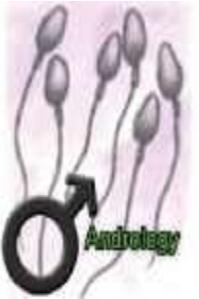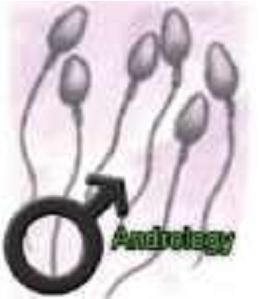Assisted Reproductive Techniques
There are varied causes of infertility amongst men and women; as a result this makes every case an entity in itself. I believe in individualizing the treatment to each couple involved and not generalizing. Accordingly methods of treatment varies from one couple to another. In this site I give brief description of various treatment methods, assisted reproductive techniques and freezing methods, which has many benefits.
Intra Uterine Insemination( IUI )
Conventional Invitro Fertilization ( IVF )
Intracytoplasmic Sperm Injection ( ICSI )
Percutaneous Epididymal Sperm Aspiration or Extraction and ICSI (PESA ,MESA)
Testicular Sperm Aspiration or Extraction and ICSI (TESA, TESE)
Assisted Hatching
Freezing
Sex Selection
Intra Uterine Insemination ( IUI )
The seminal fluid is prepared in the laboratory, semen washing with special media is done and then injected inside the uterus after stimulating the ovaries to produce more eggs per cycle. We resort to this method of treatment usually in cases were the man has slight deficiency in the number or motility of the sperms, it is also done in cases of negative post coital test (due to either antibodies or thick cervical mucus).
It is worth mentioning that the first successful IUI was done in the 18th century.
Conventional In vitro Fertilization ( IVF )
The first successful IVF case was in 1978 when a British woman delivered a baby called Louisa Brown in 28 of July 1978 in Oldam in England by cesarean section.
It had taken nearly a century of research to achieve that.
What is in vitro fertilization?
The ova (eggs) are fertilized in the laboratory in a dish. After retrieving the Eggs from the ovaries, the sperms are added to it (after doing semen washing using special media). The dishes are put in special incubators until embryos are formed and then transferred into the woman's uterus (which is done from 2-5 days).
What is conventional IVF and when it's done?
As described above the eggs are mixed with thousands of sperms in a special dish and put in a special incubators simulating natural conditions. The fertilization is observed in the laboratory ; after fertilization is assured and cell division observed the embryos are returned to the woman's uterus through the cervix using a special catheter.
It is done in the following cases:
Women with blocked fallopian tubes
Ovulation problems.
Mild degree of seminal problems for the man.
Unexplained infertility cases.
Presence of seminal antibodies in the woman's body.
What are the steps done in In vitro Fertilization?
The ovaries are stimulated using ovarian stimulating drugs to produce a good number of Follicles.
The vaginal ultrasound is used to monitor the number and size of the follicles and to adjust the
dose of the injections accordingly.
HCG Hormone injection is given for final maturation of the eggs.
Oocytes (eggs) retrieval is done 34-37 hours after taking the HCG injection.
How is oocytes (eggs) retrieval done and what are the complications?
This is usually done by using the vaginal ultrasound and a special needle either under general or local anaesthetic according to the case. The patient may need to stay in the hospital for two hours to recover after the procedure.
Complications for the pick up procedure ?
-Slight pain in the lower abdomen .
-Slight Spotting (to bleeding) from the vagina as a result of the needle used for the pick up.
What happens afterwards ?
The fluid collected from the follicles in special tubes is examined by the embryologist and the eggs are isolated. The semen sample is taken in the same day and the eggs fertilized either using the conventional IVF or ICSI method ( Injecting the sperm in the Egg's cytoplasm). Fertilization is observed and after division of the cells are assured, the embryos are transferred to the uterus.
Embryo Transfer …….. when and How?
The Embryos are transferred into the uterus after 2-5 days from the date of pick up (depending on the quality and quantity of the embryos) using a special embryo transfer catheter. The patient is given drugs to help support the implantation procedure. The embryo transfer procedure does not need a lengthy hospital stay (usually one hour). Residents of other countries can travel the next day if they so wish.
Pregnant …or not?
12-14 days after the embryo transfer a blood test is done to detect pregnancy. The ultrasound can detect it around 18 days after Embryo transfer.
Success rate and factors affecting it:
This depends on many factors .The most important of which is the woman's age. The success rate declines with advancing woman's age. The recent advances is Assisted Reproductive Technology (especially the media used) has increased the overall success rate from 17% in the past to reach 45% recently. Repeating the attempts results in better success rate which reaches 70-80% in four attempts collectively.
go to the top
Intracytoplasmic Sperm Injection ( ICSI ):
The ovum (egg) is injected with a single sperm, taken from the husband's sperm (after preparation in the lab). A special needle is used to go through the wall of the egg and the sperm is introduced into the cytoplasm of the egg. The fertilization is observed later and after the division occur, the Embryos are transferred into the woman's uterus.
When is it done?
In cases of severe problems in the seminal fluid as in severe deficiency in number or motility of the sperms or both.
In cases when the man has no sperms in the seminal fluid but has sperms in his testicles as in cases where the duct is absent. In these cases the sperms are taken from either the epididymis or the testes; either by aspirating using a needle or by surgical extraction according to the case.
go to the top
Percutaneous Epididymal Sperm Aspiration or Extraction and ICSI (PESA , MESA)
This is done in special cases where the husband has one of the following problems:
- Absence of the vas deferens (through which the sperms passes from the epididymis passes to the seminal fluid ) .
-Past Infections which result in obstruction.
-Cases who had vasectomy and surgical reversal failed.
Testicular Sperm Aspiration or Extraction and ICSI (TESA, TESE)
This is done by obtaining sperm directly from the testes either by aspiration using a needle or surgical extraction (Taking a very small piece from the testes ).
The sperms are then used to do the ICSI procedure as described above .
This method is used in the following cases:
-Absence of sperms in the epididymis .
-Absent or obstructed epididymis .
go to the top
Assisted Hatching :
This method is used when there are repeated implantation failure and in special cases where the wall of the Embryo is thick.A small hole is made in the wall of the Embryo using either a needle ,special chemical or laser beam. The purpose is to increase the possibilities of implantation and result in better success rate .
go to the top
Freezing :
Embryo freezing :
When there are excess embryos they are frozen to be used for future embryo transfer. The women will not have to undergo ovarian stimulation or the pick up procedure again .
The success of this procedure depends on the quality of the Embryos .
Oocyte Freezing :
This is less successful at the present time and still in research (the spindle of the eggs gets destroyed in the freezing procedure).
Freezing seminal fluid and testicular tissue :
This is done in the following cases :
1. Men who have problems giving a sample when needed at eggs retrieval day . 2. when the man has no sperms in his seminal fluid and the sperms has to be obtained from the testis . The sperms or testicular tissue can be frozen to be used at a later date. 3. Men whose sperms are decreasing in number or motility or both . 4. Men who have testicular disease and might have surgical removal of the testis. 5. Men who have cancer and will need chemotherapy or radio therapy or both .
go to the top
Sex Selection :
It is possible to select the sex of the baby by taking a cell biopsy from the embryo (formed using In-vitro fertilization or ICSI) and using either PCR or FISH Techniques to sex the embryos or detect certain chromosomal abnormalities and transferring the healthy desired Embryos .
Finally:
In the treatment of infertility there are no guarantees but what is guarantied is our care for you and the special treatment we give you and the confidential and caring way in which we deal with all your problems.
We are here for you so don't hesitate to ask whatever you might desire to know realizing that your success is our success


